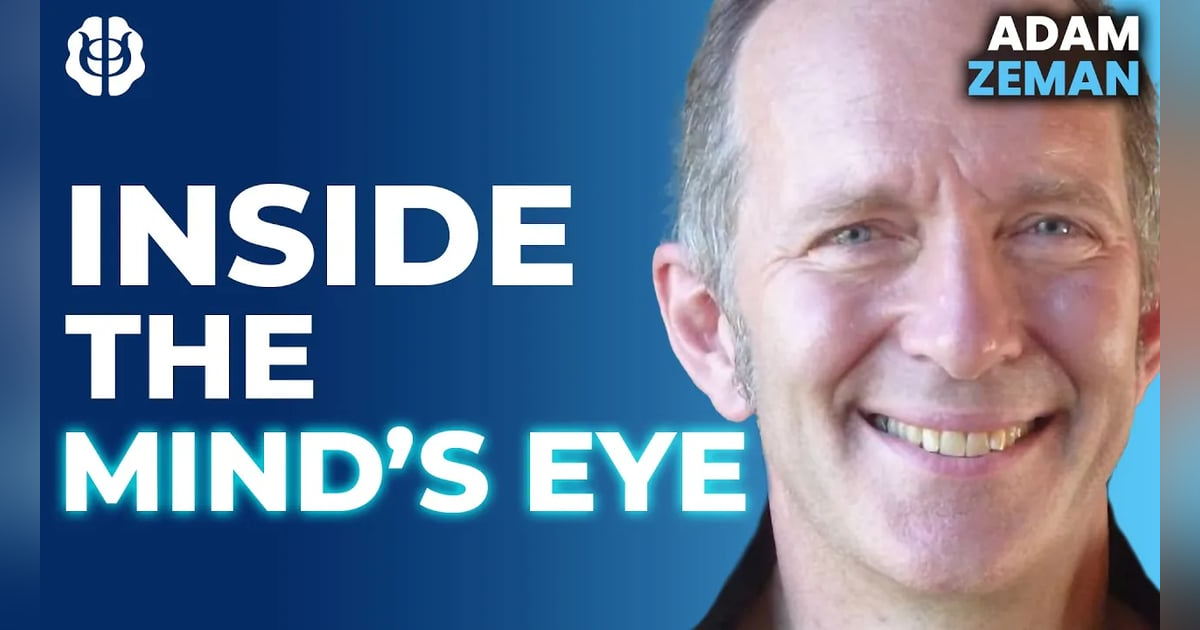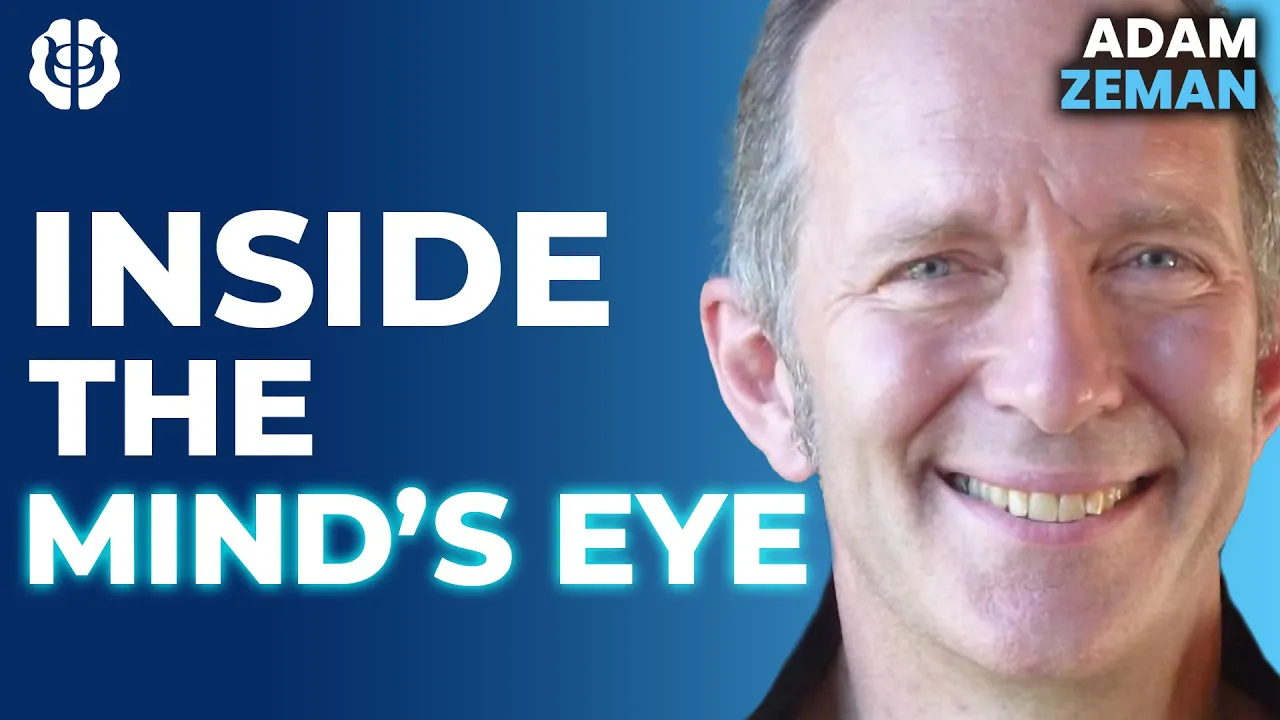What is the Mind's Eye? The Science of Imagination, Aphantasia & Consciousness | Adam Zeman


What does it really mean to see with the mind’s eye?In this conversation, neurologist and consciousness researcher Professor Adam Zeman (Cognitive & Behavioural Neurologist, University of Exeter) joins Dr Tevin Naidu on Mind-Body Solution to explore the mysterious link between imagination, memory, and perception - and what happens when the mind’s eye goes dark.Zeman coined the term aphantasia, the inability to form mental images, and has spent decades studying how imagination shapes our sense of self and consciousness. Together, we discuss:- The neuroscience of mental imagery and its vividness- What aphantasia and hyperphantasia reveal about the brain-mind interface- Imagination’s evolutionary and social roles- How disorders of imagery illuminate the nature of consciousness- Why defining "inner experience" remains one of science's deepest puzzlesTIMESTAMPS:(00:00) - Introduction: Why imagination matters and the four big ideas(02:14) - What do we mean by “imagination”? Everyday vs scientific senses(05:46) - How imagination is implemented in the brain: top-down vs bottom-up processes(09:08) - The phenomenology of imagery: vividness, aphantasia, hyperphantasia(12:58) - Aphantasia explained: discovery, definition, and how common it is(16:50) - Measuring imagery: questionnaires, behavioral tasks, and limitations(20:30) - Dreams vs wakeful imagery: why people without imagery often still dream(24:12) - Aphantasia and memory: effects on autobiographical recall and learning(27:54) - Hyperphantasia and creativity: strengths, tradeoffs, and examples(31:28) - Clinical cases & the TIME project: epilepsy, transient amnesia, and memory links(34:50) - Accelerated long-term forgetting: what it reveals about memory consolidation(38:12) - Disorders of visual imagery: aphantasia, prosopagnosia, and related syndromes(41:55) - Therapeutic and performance uses of imagery: sports, music, psychotherapy(45:20) - Objective neural markers: fMRI, activation of visual cortices and network differences(48:56) - Assessing imagery in the clinic: best practices and pitfalls(52:30) - Imagination and consciousness: philosophical implications for “life in the mind”(55:50) - Language, sharing imagination, and why we evolved communicative imagination(59:38) - Dementia, PRESIDE and clinical relevance: early markers and research directions(01:03:50) - Future directions: AI, computational models, and bridging phenomenology + neuroscience(01:07:30) - Closing reflections: practical takeaways for researchers, clinicians, and curious minds EPISODE LINKS:- Adam's Website:- Adam's X: https://twitter.com/zemanlab- Adam's Publications: https://scholar.google.com/citations?user=7BSh2mQAAAAJ&hl=en- Adam's Books: https://www.amazon.com/stores/Adam-Zeman/author/B001H6UT84?ref=sr_ntt_srch_lnk_1&qid=1760539071&sr=8-1&isDramIntegrated=true&shoppingPortalEnabled=true- Science of Imagination: https://www.youtube.com/watch?v=lkYwKjkCJgECONNECT:- Website: https://mindbodysolution.org - YouTube: https://youtube.com/@MindBodySolution- Podcast: https://creators.spotify.com/pod/show/mindbodysolution- Twitter: https://twitter.com/drtevinnaidu- Facebook: https://facebook.com/drtevinnaidu - Instagram: https://instagram.com/drtevinnaidu- LinkedIn: https://linkedin.com/in/drtevinnaidu- Website: https://tevinnaidu.com=============================Disclaimer: The information provided on this channel is for educational purposes only. The content is shared in the spirit of open discourse and does not constitute, nor does it substitute, professional or medical advice. We do not accept any liability for any loss or damage incurred from you acting or not acting as a result of listening/watching any of our contents. You acknowledge that you use the information provided at your own risk. Listeners/viewers are advised to conduct their own research and consult with their own experts in the respective fields.




